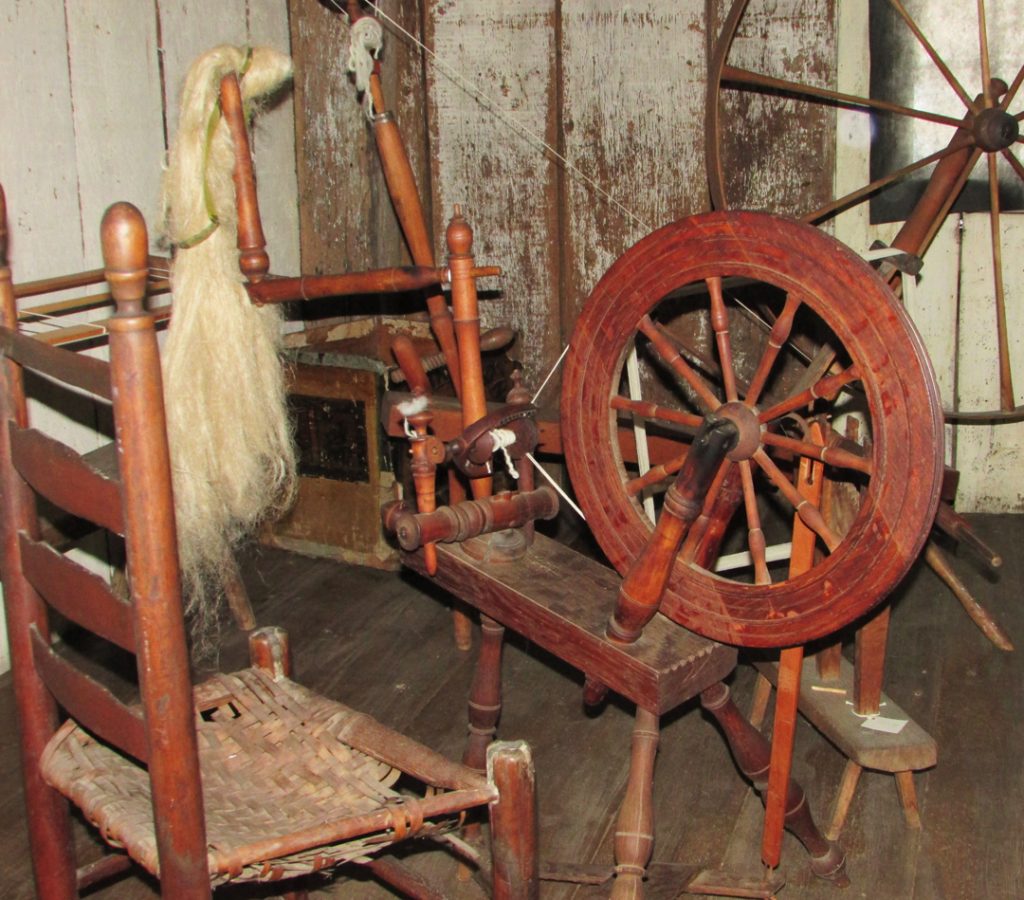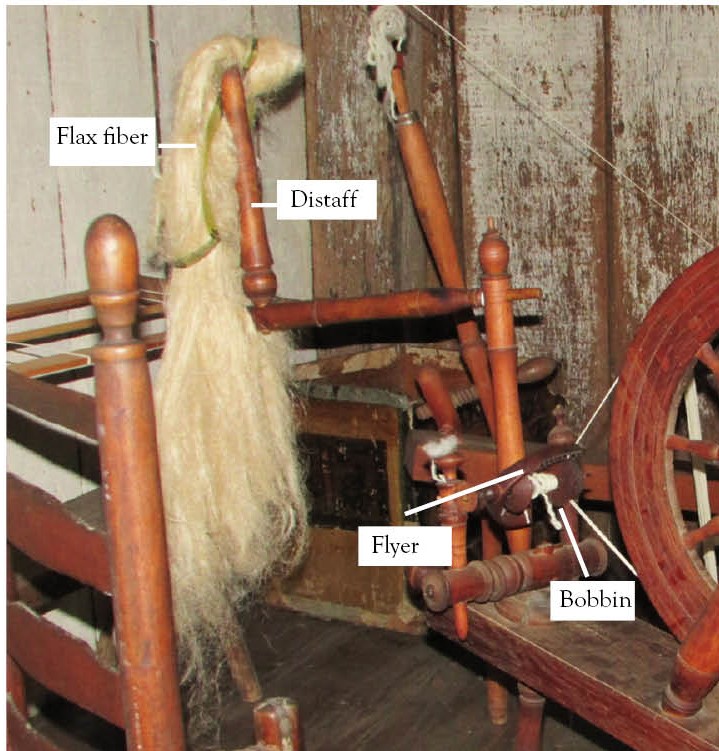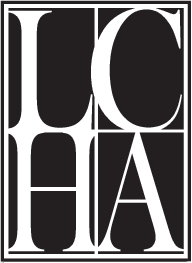Flax Wheel

A recent Object of the Week article discussed the Wool Wheel or Great Wheel. Its counterpart was the Flax Wheel, sometimes called the Foot Wheel. With the Great Wheel, the spinner had one hand free to control the fibers as they were spun into yarn; the other hand would be turning the wheel. The Flax Wheel allowed the spinner two hands to handle the fiber, as the wheel was turned by the spinner’s foot.
The purpose of either wheel was the twist the fibers into a thread or yarn. The fiber obtained from the flax plant is very long, it goes the full length of the plant, right into the root. Removing the fiber from the plant is a long and carefully monitored process. Once the plant is broken down and the fiber loosened from it, the fiber has to be cleaned and combed to obtain the finest fibers for spinning into threads fine enough for light cloth and lace making. The fiber remaining, once the finest fiber was combed out, would be re-combed and spun into thread for cloths of heavier weight.

Due to the length of the fibers, they were dressed on a distaff to keep them neat and tangle free. As the spinner prepared to work the flax fiber, she or he would place a small bowl of water on or by the wheel. As the fiber has no moisture to it, the spinner would wet her/his fingers periodically. The addition of the water to the fibers would help hold them together as they were being worked. Although the spinner starts twisting the fibers lightly, it is the flyer of the spinning wheel that finishes the twisting. The flyer of a flax wheel is attached to a spindle that also holds a bobbin. Due to the set-up of the spindle on the wheel, the fiber is not only twisted, but it is also wound up on the bobbin.
Spinning is considered an independent invention. That is, no single civilization discovered it and passed it along. The spinning of fibers has been found by archaeologists in a number of regions. The Flax Wheel is younger than the Great Wheel and thought to have originated in the area now known as Germany.
Louise Miller, LCHA Education Director

 Newsletter
Newsletter Join LCHA
Join LCHA Donate Now
Donate Now